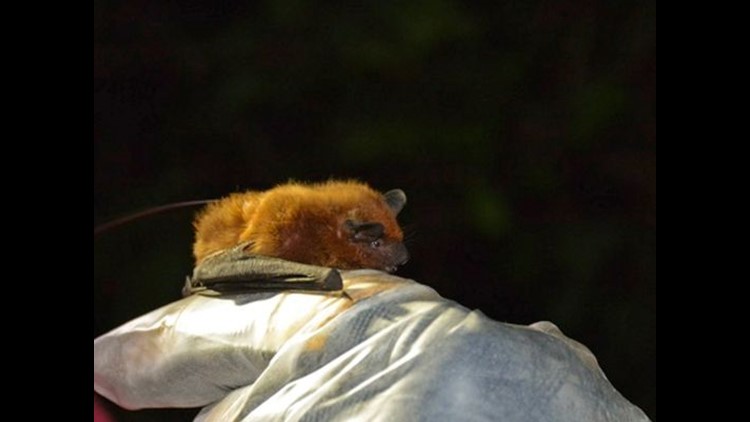State conservation officials on Tuesday announced the discovery of a new bat species in Wisconsin for the first time in more than 60 years when researchers found scores of the bats near the Sugar River in Rock County this summer.
The Department of Natural Resources said researchers discovered the new species — known as an evening bat — living in the hollow of trees in Avon Bottoms State Natural Area.
Evening bats were discovered by researchers studying summer habitats of other bat species that are vulnerable to white-nose syndrome, a deadly disease that has killed millions of bats nationwide.
The discovery is the first new bat species in the state since 1954, according to the DNR.
“We expected new species of invertebrates and insects, where maybe there isn’t a lot of research going on," said Owen Boyle, natural heritage conservation species section chief for the DNR.
“But for mammals and birds, the bar is higher and a new discovery is more significant because they are much more studied.”
Still, the scientists expected they might find evening bats this year because they range as far north as Illinois. Also, last summer the researchers discovered a single juvenile male in the same area.
Then in mid-June and mid-July, they found about 60 bats in one tree and about 100 in another tree in Avon Bottoms about five miles north of the Wisconsin-Illinois border.
This brings to eight the number of bat species that are known to inhabit Wisconsin: Winter cave-dwelling bats (little brown, big brown, northern long-eared and eastern pipistrelle); and migrating bats (eastern red, hoary, silver-haired and evening bats).
It’s not clear why the new species showed up. One explanation is the void left by the death of bats susceptible to white-nose syndrome, with evening bats moving in, Boyle said.
The discovery was made by the DNR's Heather Kaarakka and other bat researchers.
They found the first evening bat in mid-June by trapping it in a mist net. After quickly retrieving the bat, they attached a small radio-tracking device and followed the bat to a tree filled with other evening bats.
The second batch was found about as month later. They counted approximately 160 bats at both sites as the animals left the trees at dusk.
The last time a new species of bat was documented in the state was in November 1954 when an Indiana bat was found. It was the one and only time the bat was seen. Attempts to find Indiana bats in the 1980s and 1990s were not successful.
The field research that led to the latest discovery is part of a project in Wisconsin, Minnesota and Michigan to learn more about hibernating bats that are susceptible to white-nose syndrome.
Bats vulnerable to the disease live in caves in the winter, and researchers want to learn more about their habitat in the summer to better manage habitat for the bats, Kaarakka said.
Since it was first discovered in 2006 in the eastern United States, the fungus of white-nose syndrome has killed an estimated 5.7 million to 6.7 million bats. The bat population so far in Wisconsin is stable, according to the DNR.
A silver lining: Evening bats do not appear to be harmed by white-nose syndrome.



